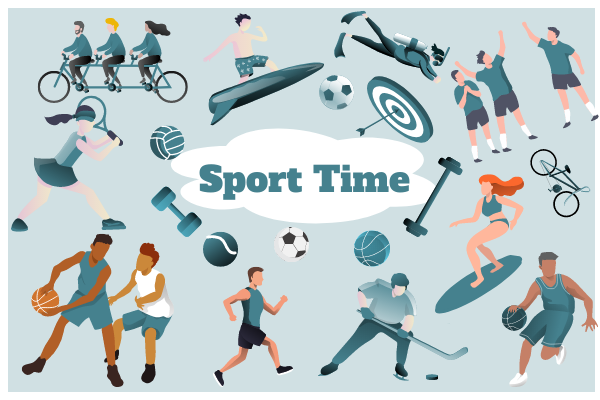Now digital world, live sports streaming latency solution have become an essential part of global entertainment. Fans expect to watch events in real time, with instant updates, clear visuals, and immersive experiences that rival being at the stadium. However, one of the biggest challenges in live sports broadcasting is latency, the delay between an event occurring on the field and when it appears on viewers’ screens.
Reducing latency is critical for maintaining audience engagement, preventing competitive disadvantages in betting or fantasy sports, and ensuring advertisers get maximum value. This is where live sports streaming latency solution technologies come into play, transforming live sports broadcasts into true real-time experiences.
Understanding Latency in Sports Streaming
Latency, often referred to as delay, is the time difference between a live event happening and when it is displayed on a screen. Even a delay of a few seconds can impact the viewer’s experience in sports broadcasts. For example:
- In football, a 10-second delay might mean fans see a goal after social media updates have spoiled it.
- In live betting, milliseconds of delay can affect odds and fairness.
- For esports, even a slight delay can disrupt competitive gameplay and fan engagement.
A robust sports streaming latency solution aims to reduce this gap to fractions of a second, creating near real-time viewing experiences for audiences worldwide.
Why Low Latency Matters in Sports
The sports industry relies heavily on real-time engagement. Here’s why a live sports streaming latency solution is crucial:
1. Enhanced Fan Experience
Fans expect to see live action as it unfolds. Low-latency streaming keeps viewers immersed, allowing them to react and share excitement instantly.
2. Fairness in Betting and Fantasy Sports
Millions of viewers participate in live betting and fantasy leagues. Delays can create unfair advantages. Sports streaming latency solution ensures integrity and fairness in these real-time applications.
3. Improved Advertising Value
Advertisers benefit from precise targeting during live broadcasts. Low latency ensures ads are synchronized with the live event, enhancing engagement and ROI.
4. Competitive Edge for Broadcasters
Platforms that deliver near-zero latency streaming attract more viewers, enhancing brand reputation and market share in the crowded sports streaming ecosystem.
Technologies Behind Live Sports Streaming Latency Solution
Several technologies and protocols work together to reduce latency in live sports broadcasts:
1. Adaptive Bitrate Streaming (ABR)
ABR adjusts the video quality in real time based on network conditions, ensuring smooth playback without buffering while reducing unnecessary delays.
2. WebRTC (Web Real-Time Communication)
WebRTC is a protocol that enables real-time audio and video streaming directly between browsers or apps, reducing the delay significantly compared to traditional streaming methods.
3. Low-Latency HLS and DASH
Low-Latency HLS and MPEG-DASH allow broadcasters to segment content into smaller chunks and deliver them faster, drastically reducing the end-to-end delay.
4. Edge Computing and CDN Optimization
By processing data closer to end-users and optimizing content delivery networks (CDNs), edge computing reduces transmission delays and improves streaming responsiveness.
5. Protocol Optimization
Custom streaming protocols with TCP or UDP optimizations can further reduce buffering, packet loss, and latency, ensuring smoother real-time sports experiences.
How Live Sports Streaming Latency Solution Transforms Sports
Effective latency solutions make a visible difference in how audiences experience live sports:
- Instant Reactions and Social Engagement
Fans can celebrate, comment, or share highlights simultaneously with the live event, creating interactive viewing experiences on social media platforms. - Enhanced Multi-Angle Viewing
Low-latency streams allow fans to switch between different camera angles or on-demand stats without noticeable delay, providing a more immersive experience. - Improved Game Analytics
Real-time data analytics, such as player stats, scores, or heatmaps, can be delivered instantly to viewers or coaches, enhancing decision-making during live events. - Seamless Integration with AR/VR
Augmented and virtual reality experiences rely heavily on low latency. Fans can enjoy immersive simulations, interactive overlays, and live commentary in sync with real-world action.
Challenges in Implementing Live Sports Streaming Latency Solution
While the benefits are clear, implementing low-latency streaming is not without challenges:
- Network Instability: Variability in user bandwidth can cause delays or buffering, affecting the real-time experience.
- Device Compatibility: Ensuring low-latency playback across multiple devices and operating systems is complex.
- Scalability: High-profile events attract millions of concurrent viewers, requiring robust infrastructure to maintain low latency.
- Cost Considerations: Implementing advanced streaming technologies and CDNs can be expensive, especially for smaller broadcasters.
Best Practices for Real-Time Sports Streaming
Broadcasters and streaming platforms can follow several strategies to optimize latency:
- Leverage Multi-CDN Networks
Distributing content across multiple CDNs reduces server load and improves delivery speed for global audiences. - Optimize Video Chunk Sizes
Smaller video chunks reduce transmission time and allow faster playback on end-user devices. - Use Hardware Acceleration
Optimizing encoding and decoding with dedicated hardware reduces processing delays. - Monitor Latency Metrics in Real-Time
Continuous monitoring allows streaming teams to adjust protocols and prevent delays during critical moments. - Integrate Edge Computing Solutions
Processing data closer to end-users decreases transmission delays and enhances the real-time experience.
Future of Live Sports Streaming Latency Solution
As sports broadcasting continues to evolve, latency solutions will play a central role in shaping viewer experiences:
- 5G Connectivity: Ultra-low latency and high bandwidth for mobile viewers.
- Cloud-Based Live Production: Efficient processing and distribution of live feeds.
- AI-Enhanced Streaming: Predictive analytics to optimize network paths and adjust streaming quality dynamically.
- Interactive Features: Real-time polls, live chats, and in-game interaction rely heavily on minimal latency.
Low-latency solutions are now essential for delivering high-quality sports content globally.
Conclusion: Elevating Sports Experiences with Live Sports Streaming Latency Solution
Latency is more than just a technical metric; it directly affects fan engagement, revenue, and brand reputation. By implementing an advanced live sports streaming latency solution, broadcasters can deliver real-time sports experiences that are immersive, interactive, and reliable. From live scores and statistics to multiple camera angles and VR overlays, every millisecond counts in creating an unforgettable viewing experience.
For businesses looking to optimize live sports streaming, doverunner provides expert live sports streaming latency solution services. With deep expertise in edge computing, multi-CDN optimization, and low-latency protocols, DoveRunner helps broadcasters ensure fans never miss a moment of the action.






